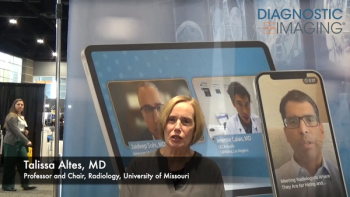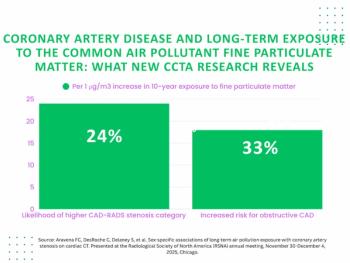
ED Neuroimaging Spikes over Decade
Use of head and neck CTA has increased significantly among commercially insured and Medicare Advantage patients.
Utilization of head and neck CT angiography (CTA) in the emergency department ballooned, outpacing all other neurological exams.
In a study published Aug. 5 in the
“The rapid growth of head and neck CTA observed in the fee-for-service Medicare population is also observed in the commercially insured and Medicare Advantage populations,” said Selin Merdan, Ph.D., associate director of the Value Analytics Lab in Georgia Tech’s department of industrial and systems engineering.
For their study, Merdan’s team evaluated the annual emergency department utilization of head CT, head MR, head CTA, neck CTA, head MR angiography (MRA), neck MRA, and carotid duplex ultrasound. They based their assessment on patient-level claims from Optum’s De-identified Clinformatics Data Mart database – a database that includes between 12 million and 14 million commercial and Medicare Advantage health plan enrollees.
They adjusted utilization rates using annual relative proportions of age groups and stratified by patient demographics, payer type, and provider state to account for an older sample population.
Based on their analysis, they determined emergency department neuroimaging use spiked 72 percent overall during the study period. Specifically, they found these increases: 69 percent for head CT, 67 percent for MRI, 1,100 percent for head CTA, 1,300 percent for neck CTA, 36 percent for head MRA, 52 percent for neck MRA. They also identified a slight drop of 8 percent for carotid duplex ultrasound.
In addition, among patients 65 and older, head CT and CTA of the head and neck experienced a continuous increase of 48 percent and 1,011 percent, respectively, for every 1,000 emergency department visits.
These findings, the team said, warrant paying closer attention to neuroimaging use in the emergency department.
“The appropriateness of this growth should be monitored as the indications for CTA expand and more incidental findings are uncovered,” the team said.
For more coverage based on industry expert insights and research, subscribe to the Diagnostic Imaging e-Newsletter
Newsletter
Stay at the forefront of radiology with the Diagnostic Imaging newsletter, delivering the latest news, clinical insights, and imaging advancements for today’s radiologists.




























